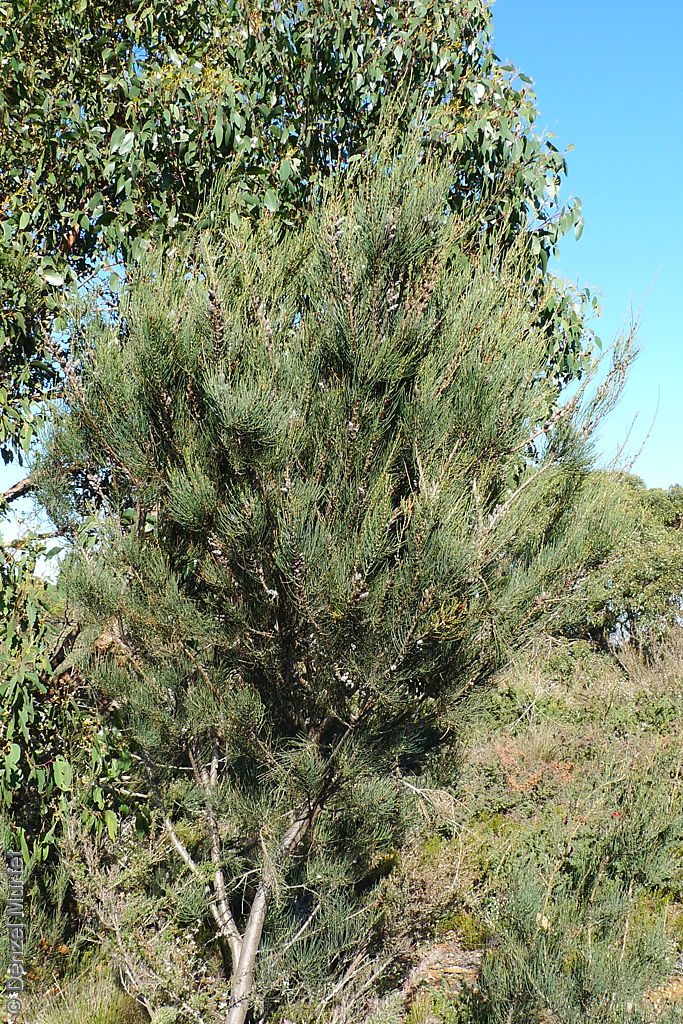
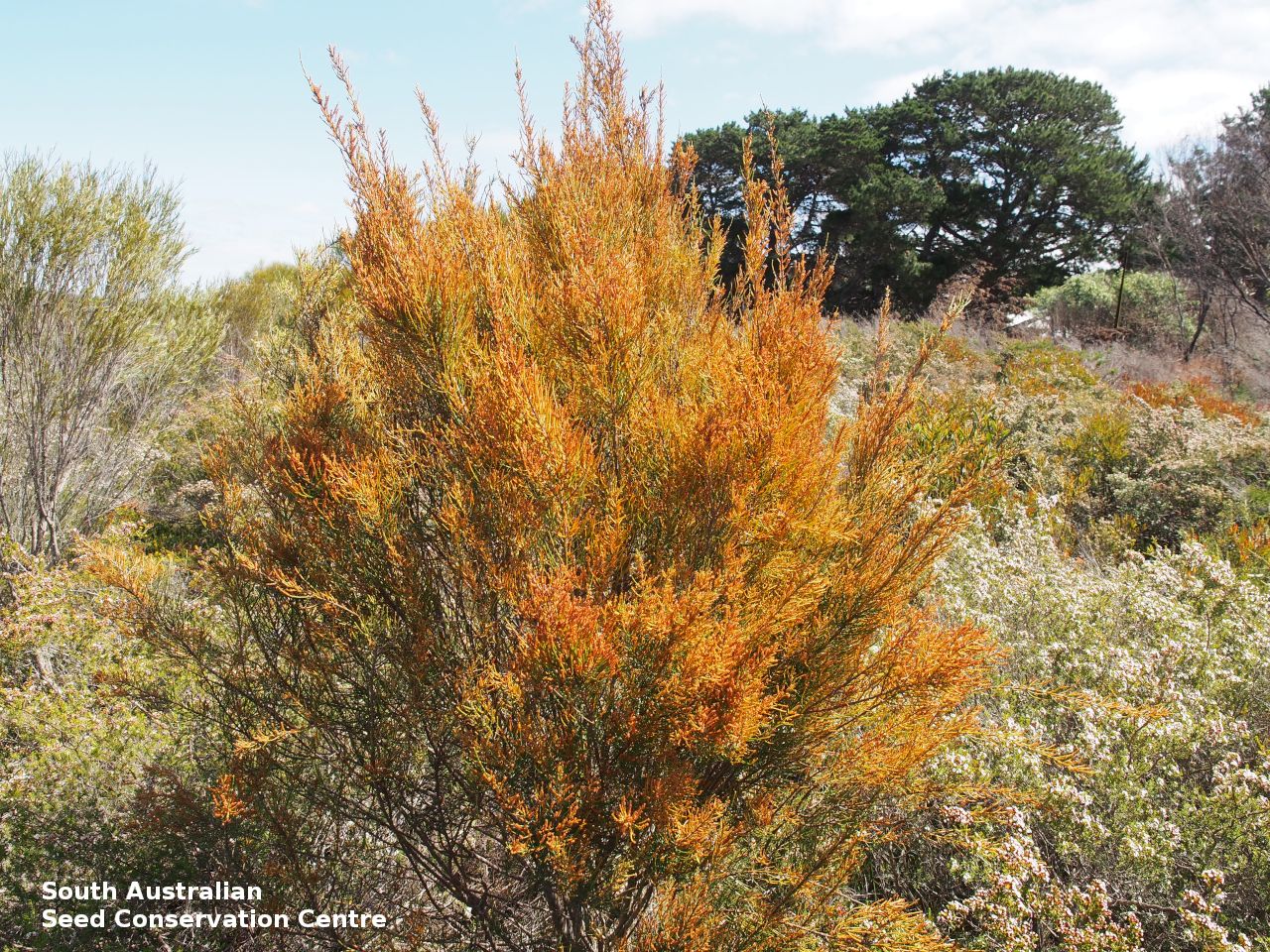
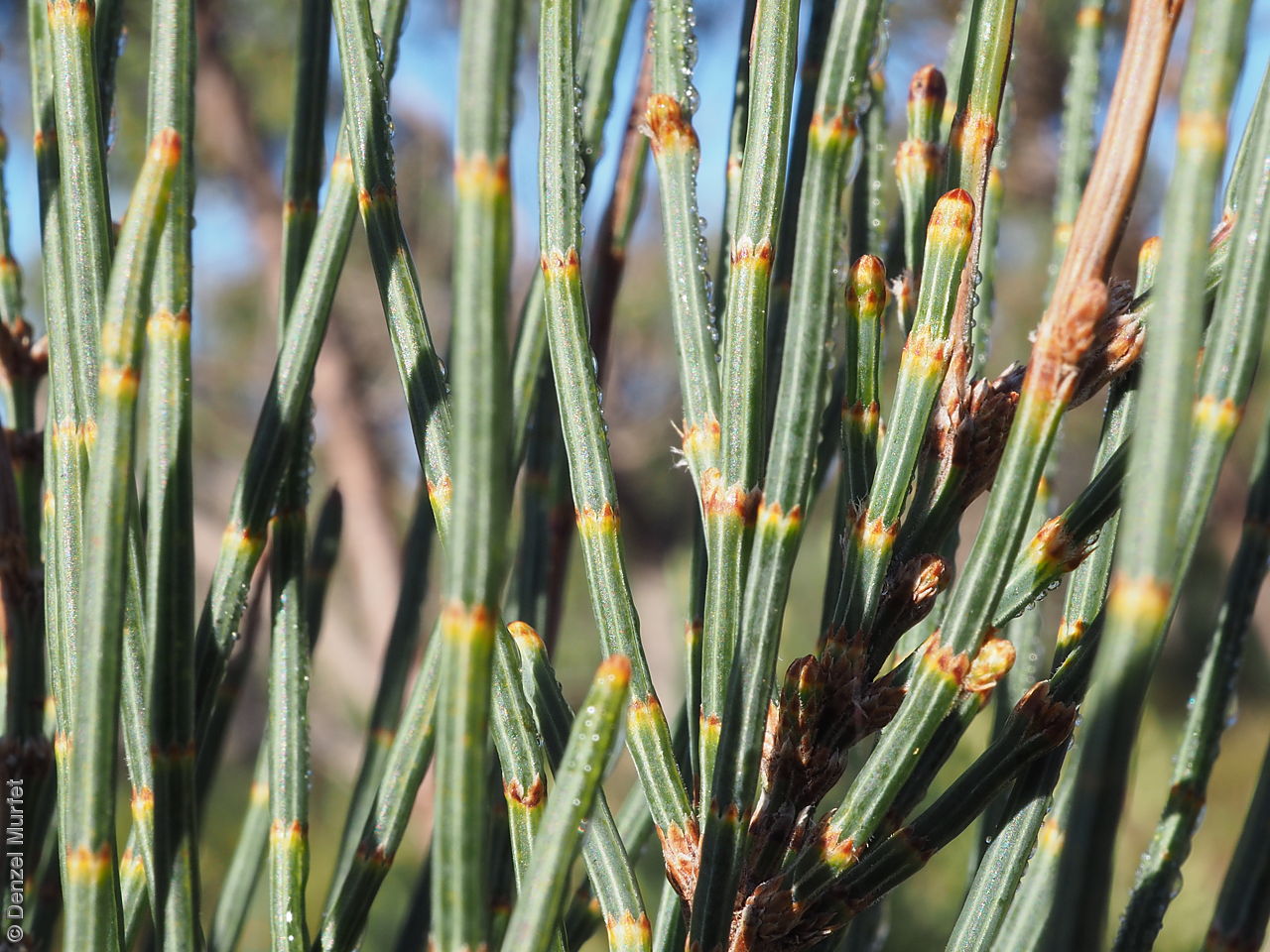
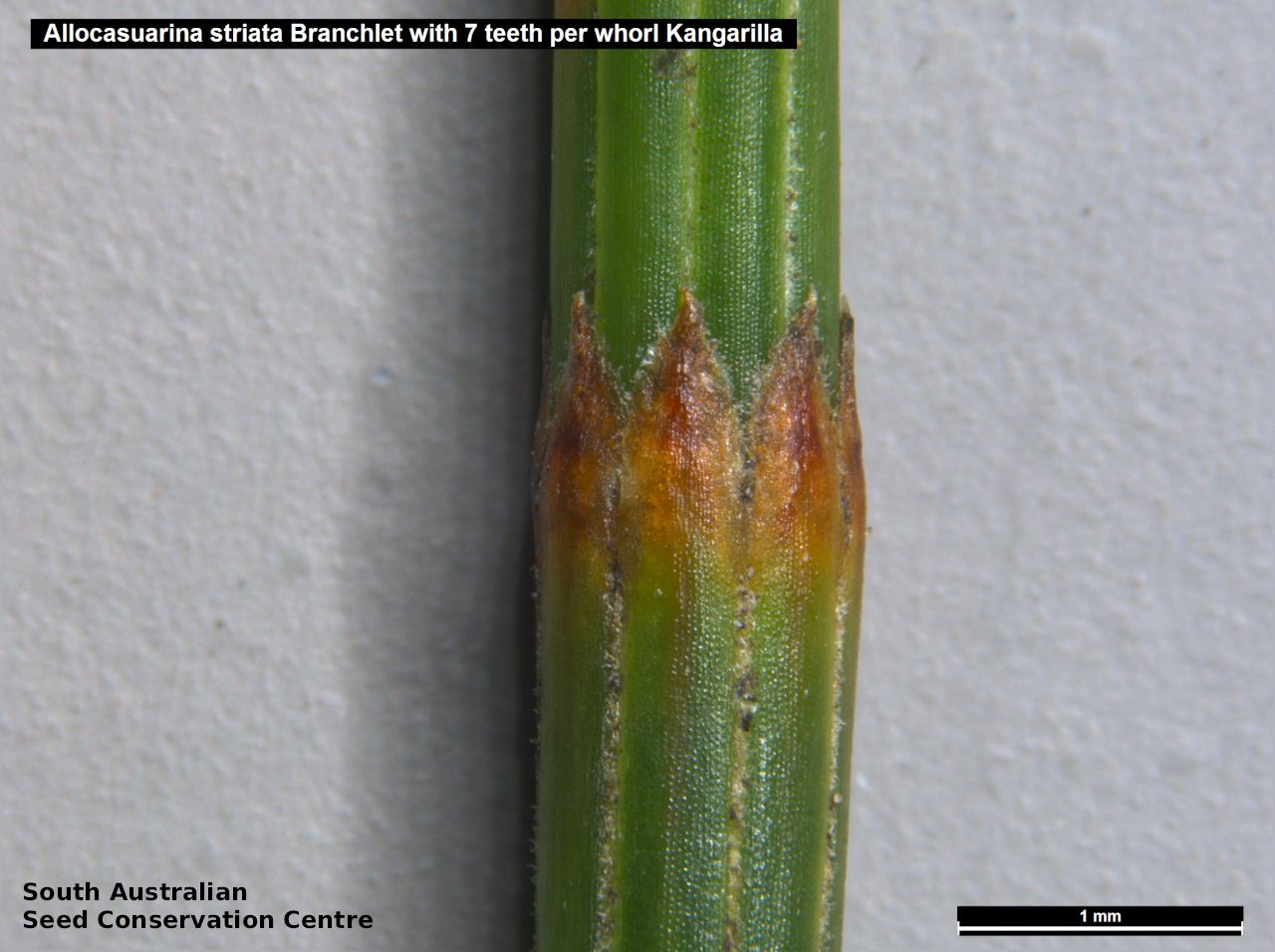
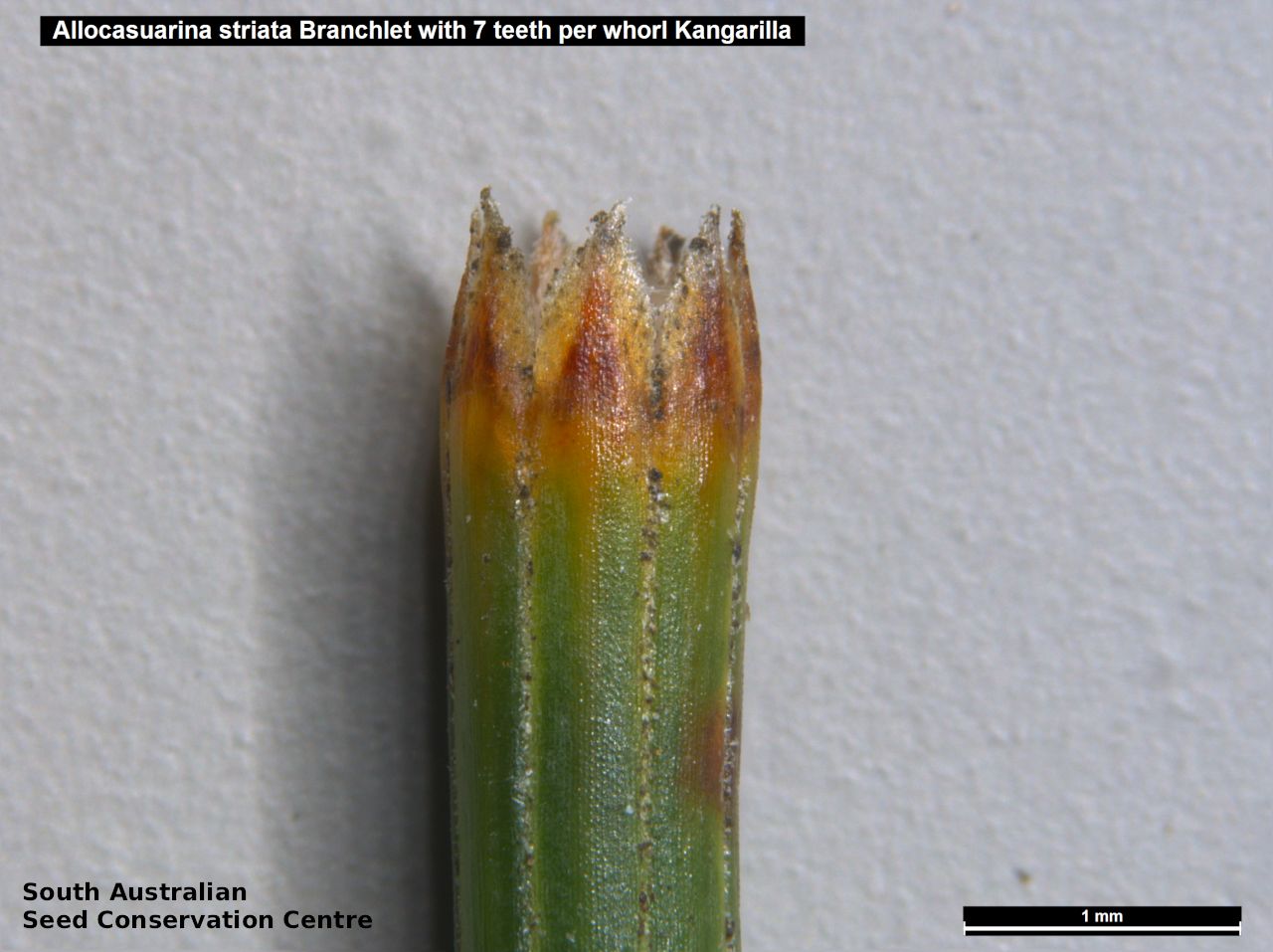
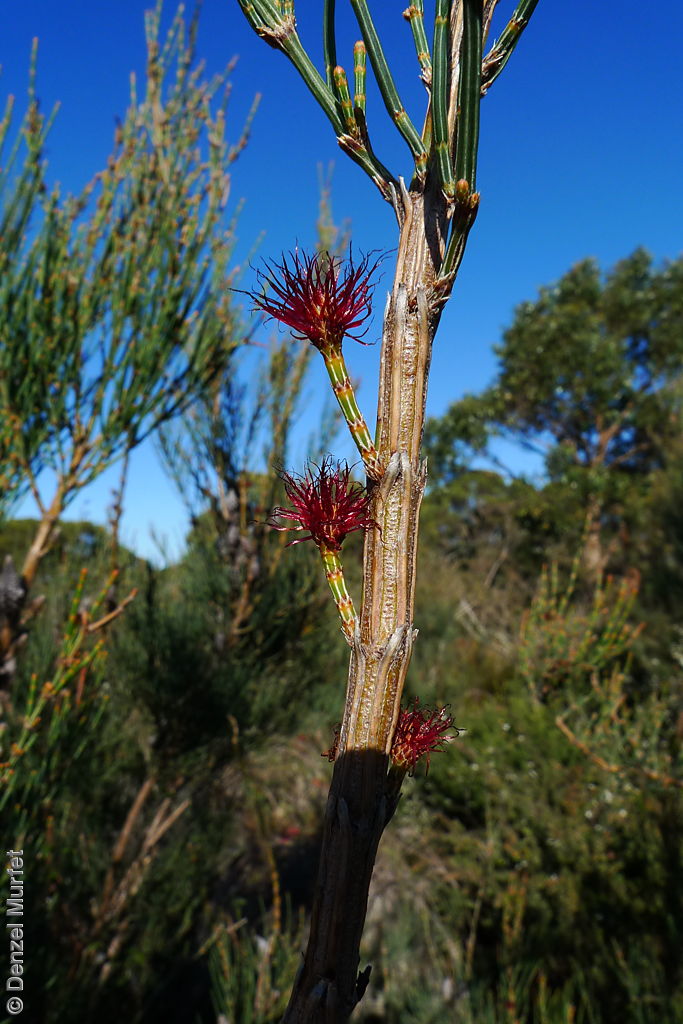
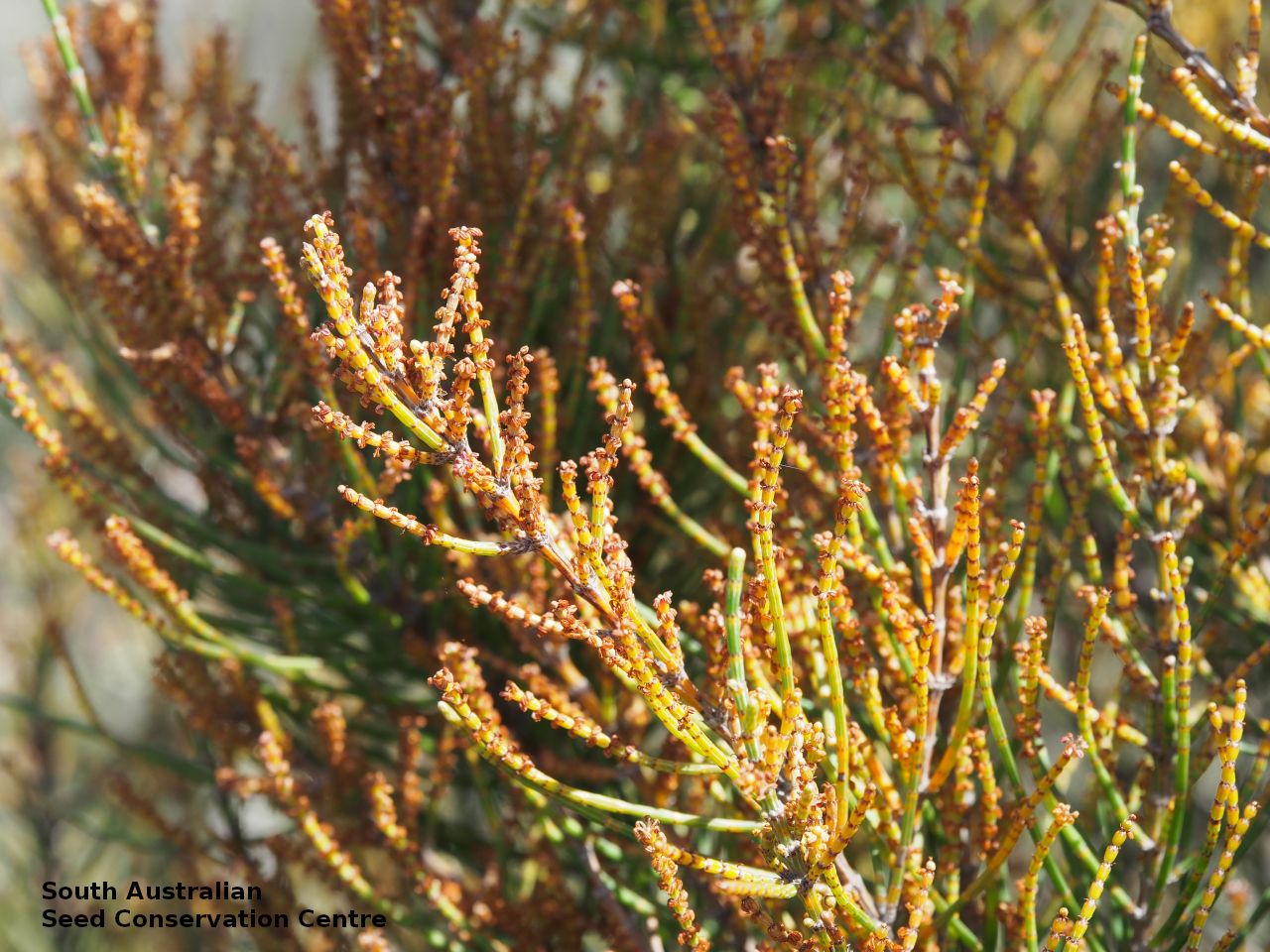
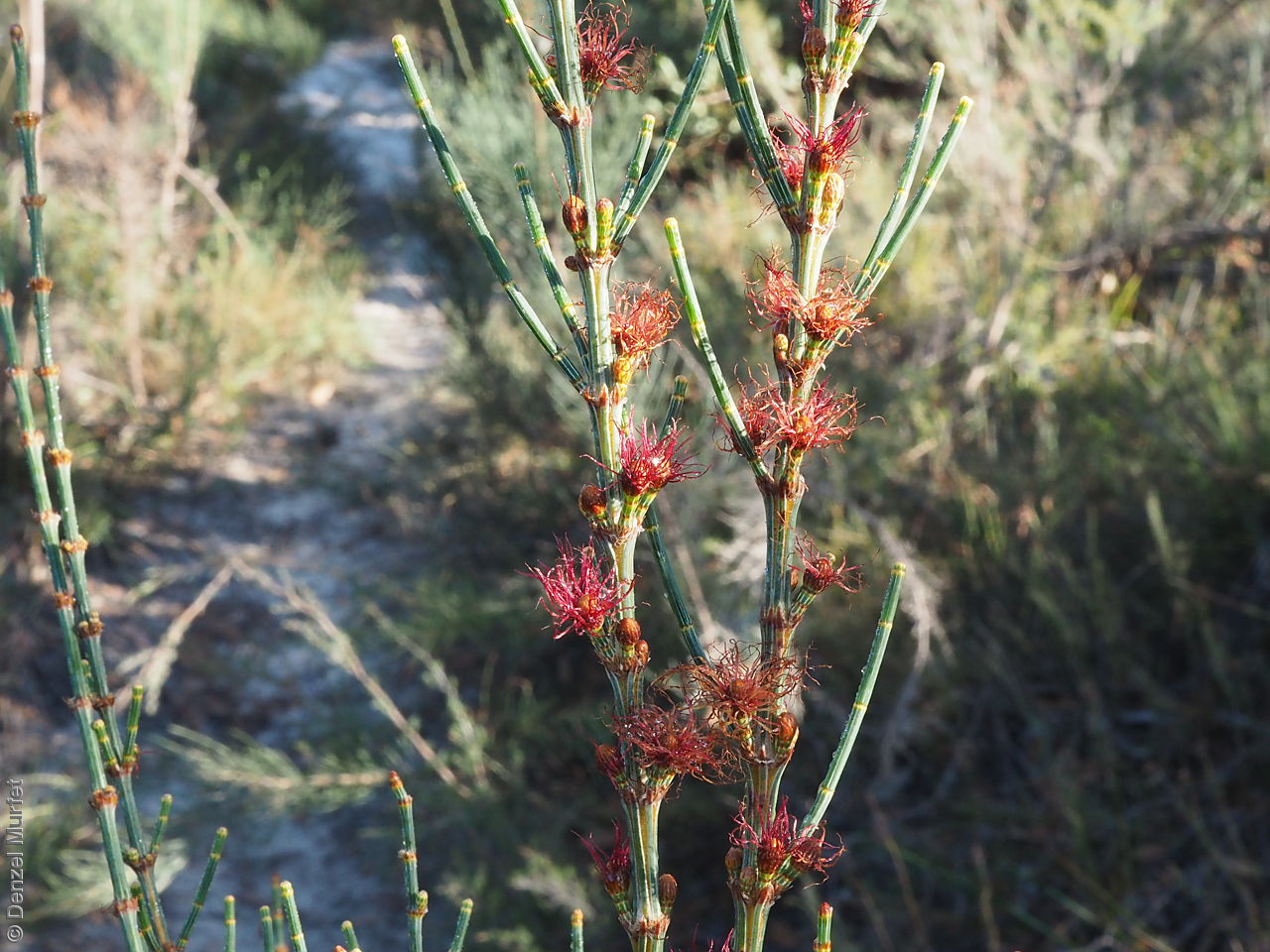
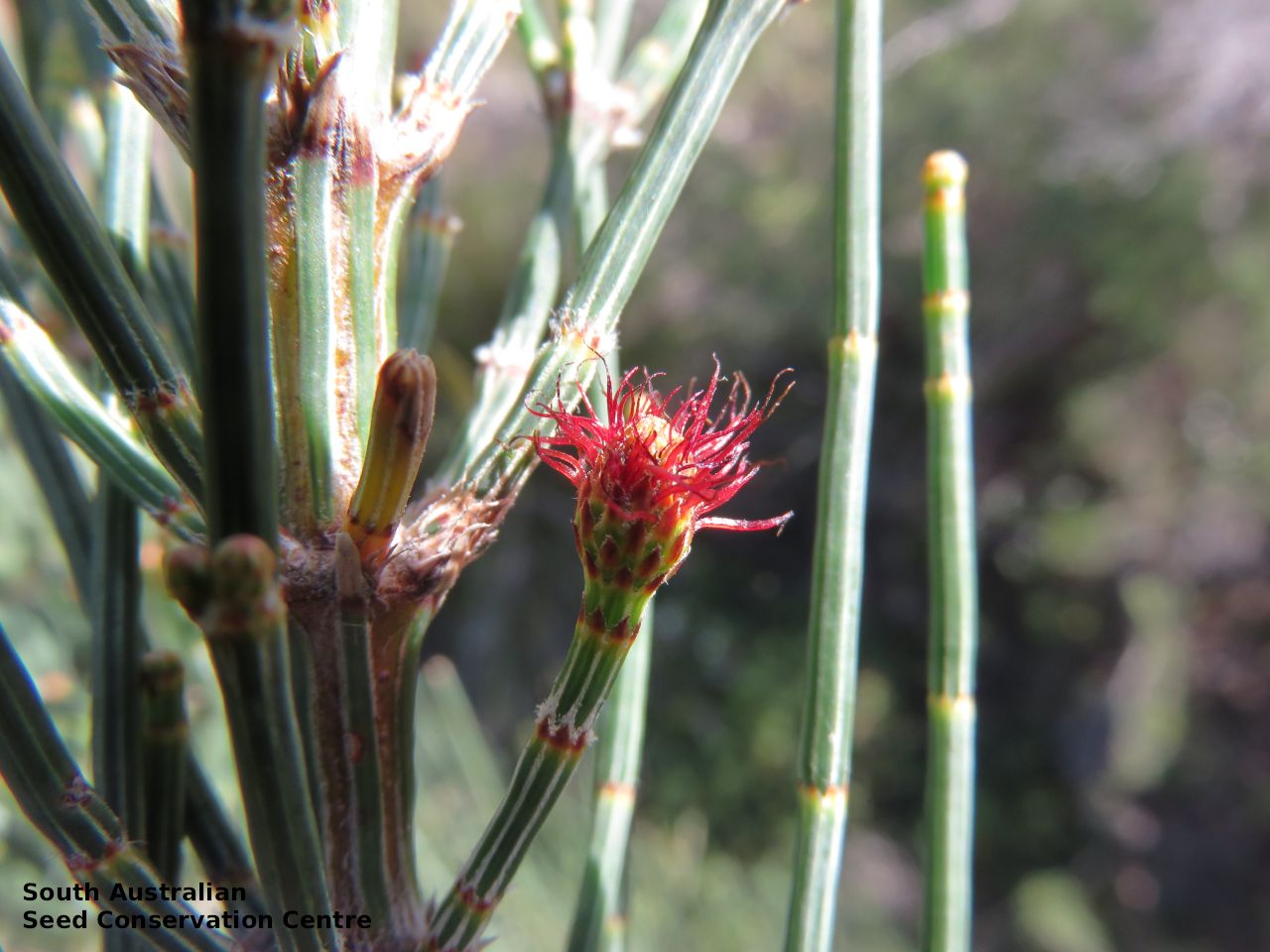
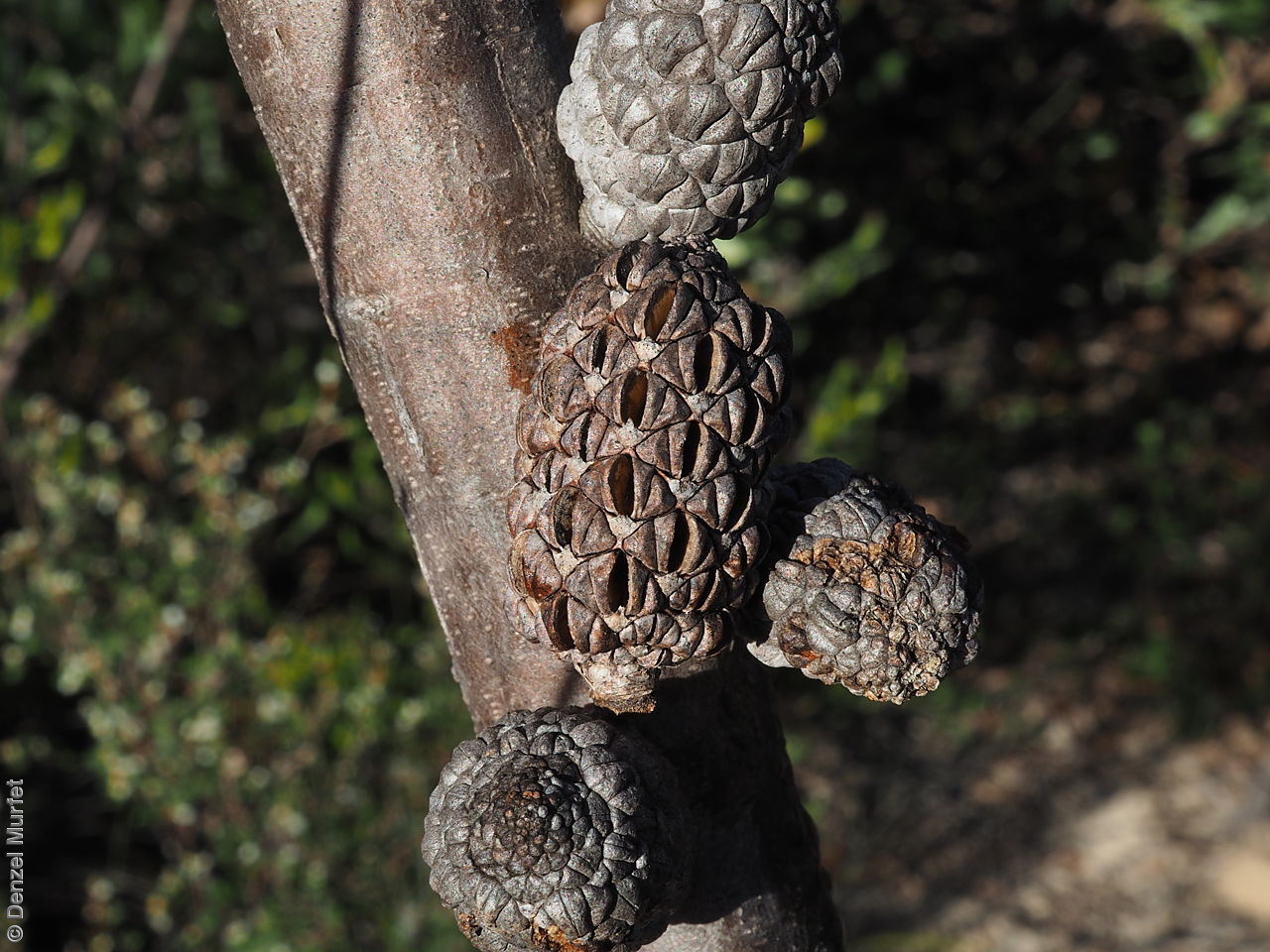
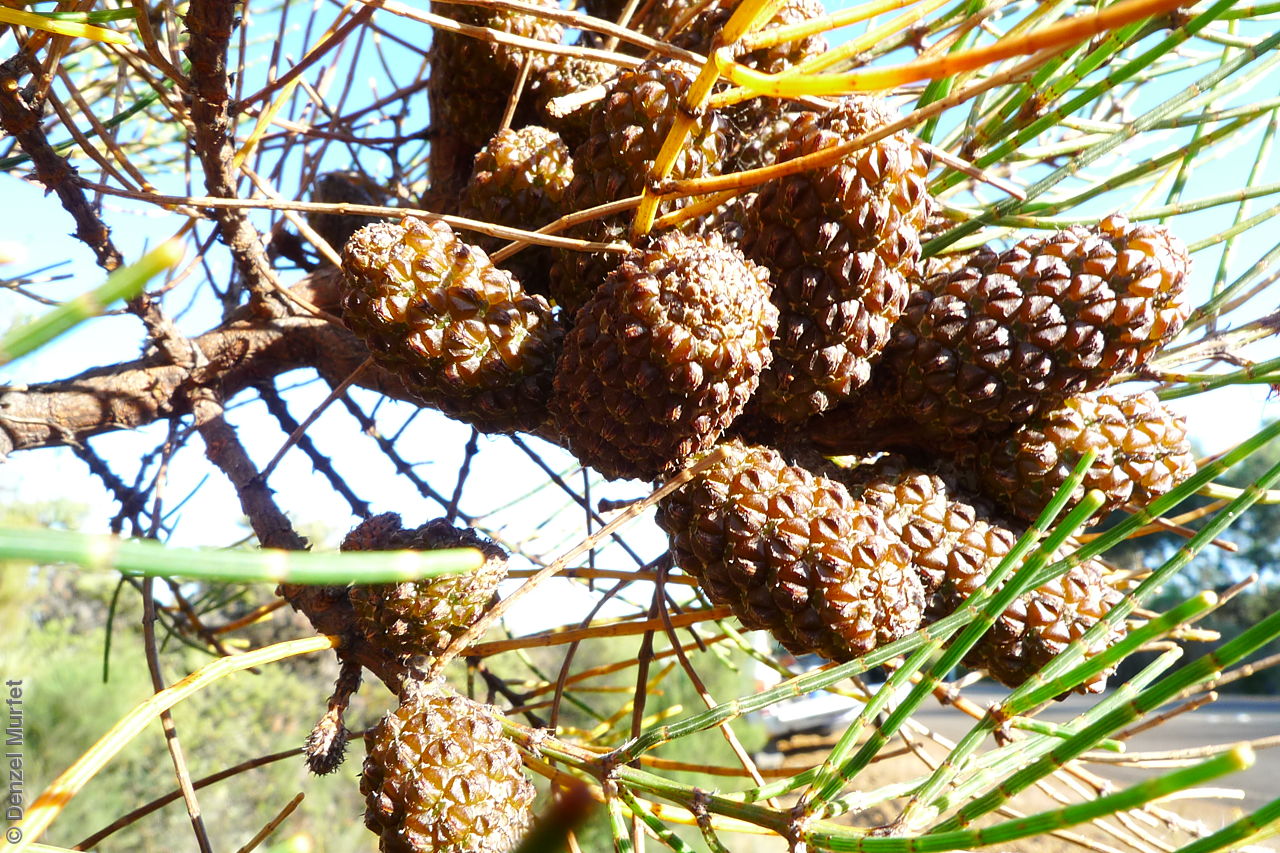
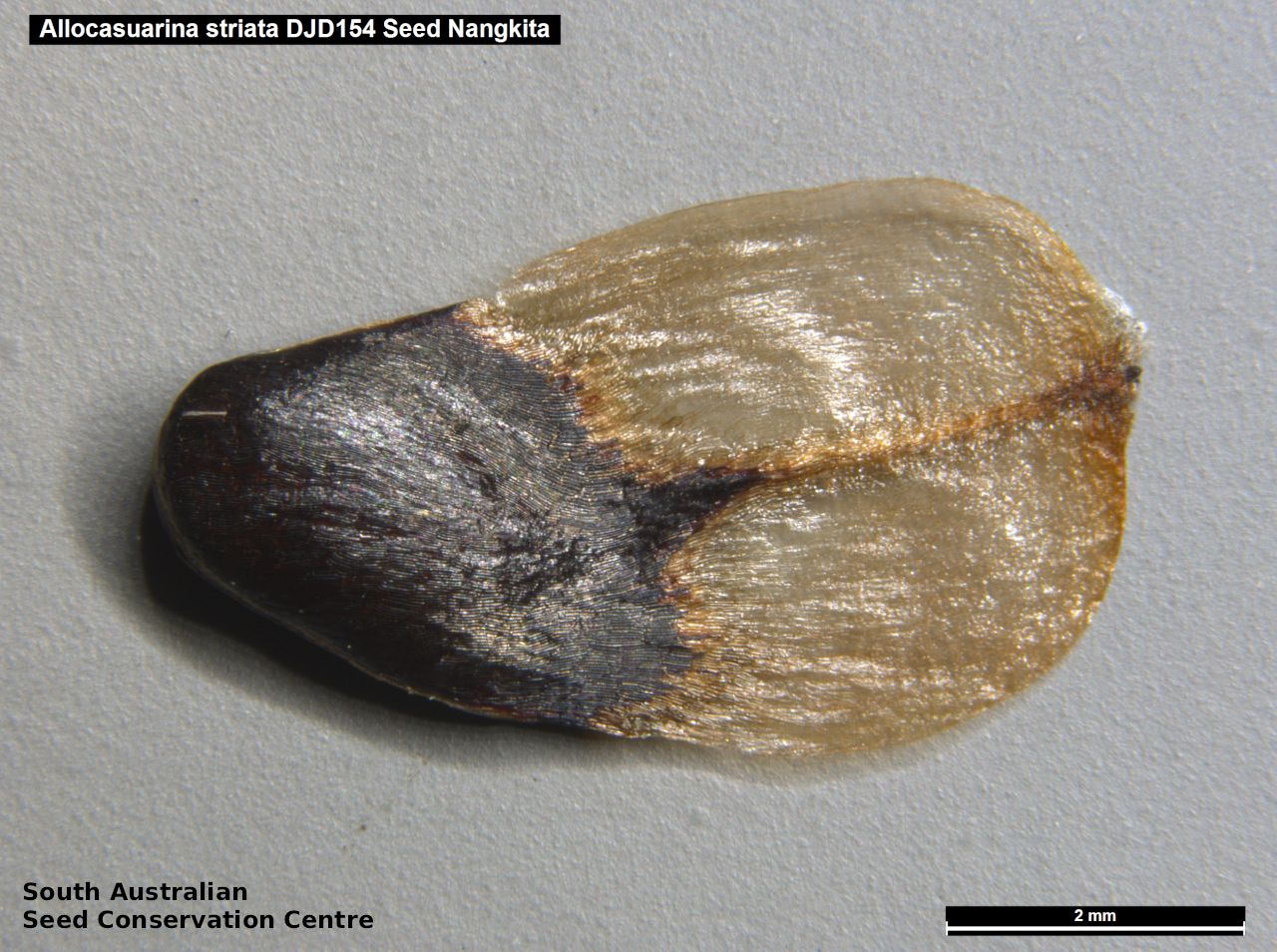
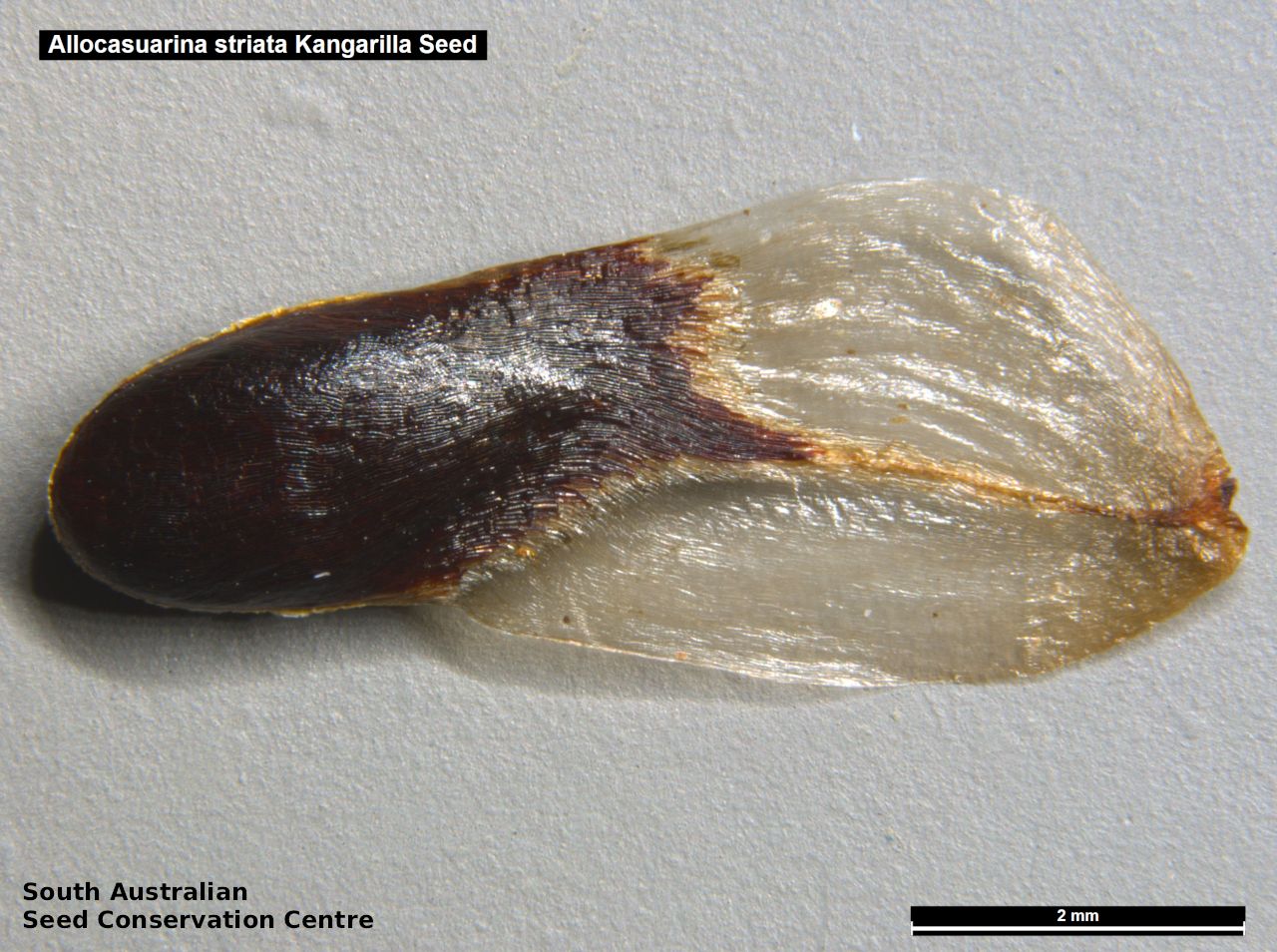

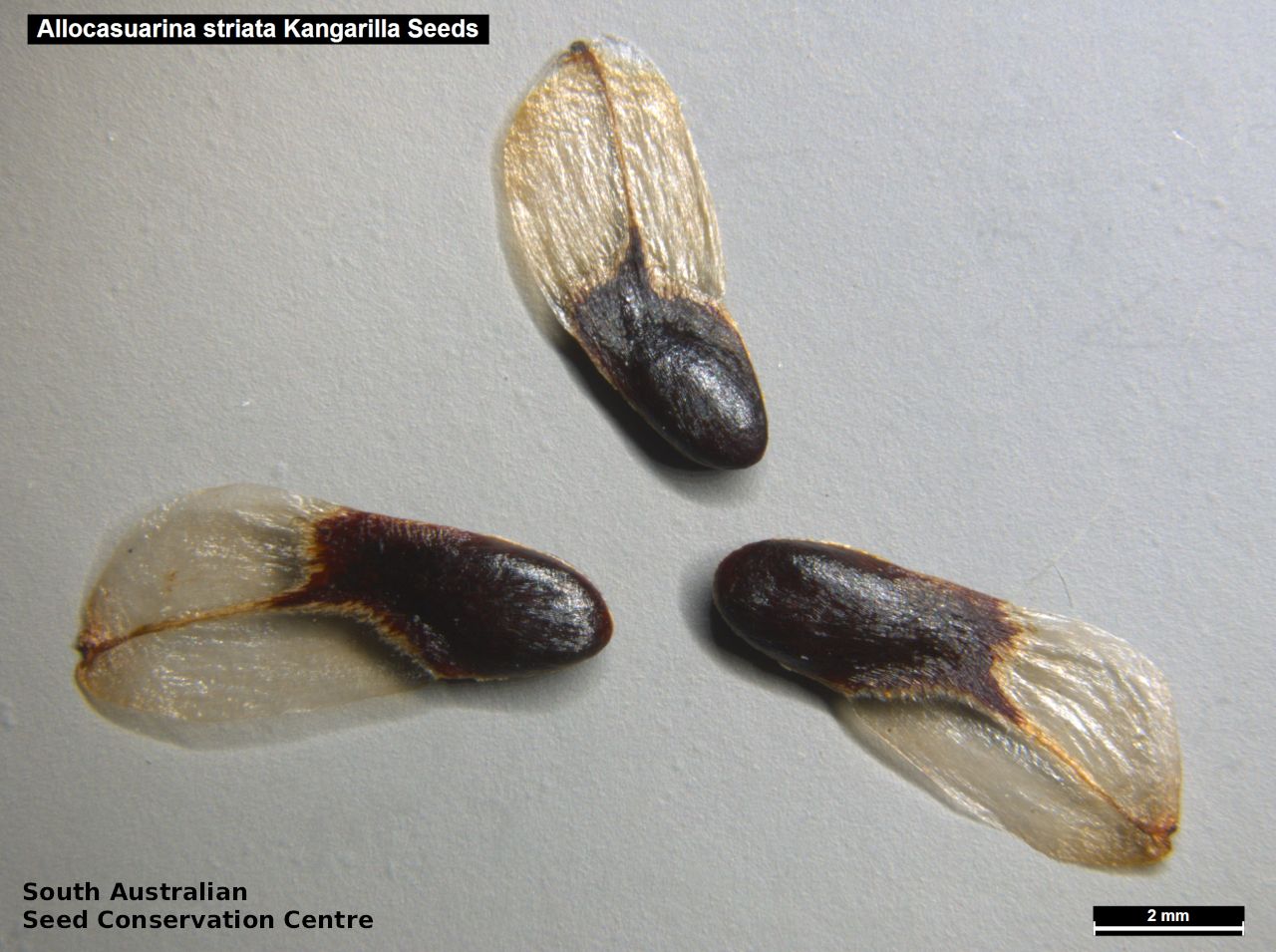

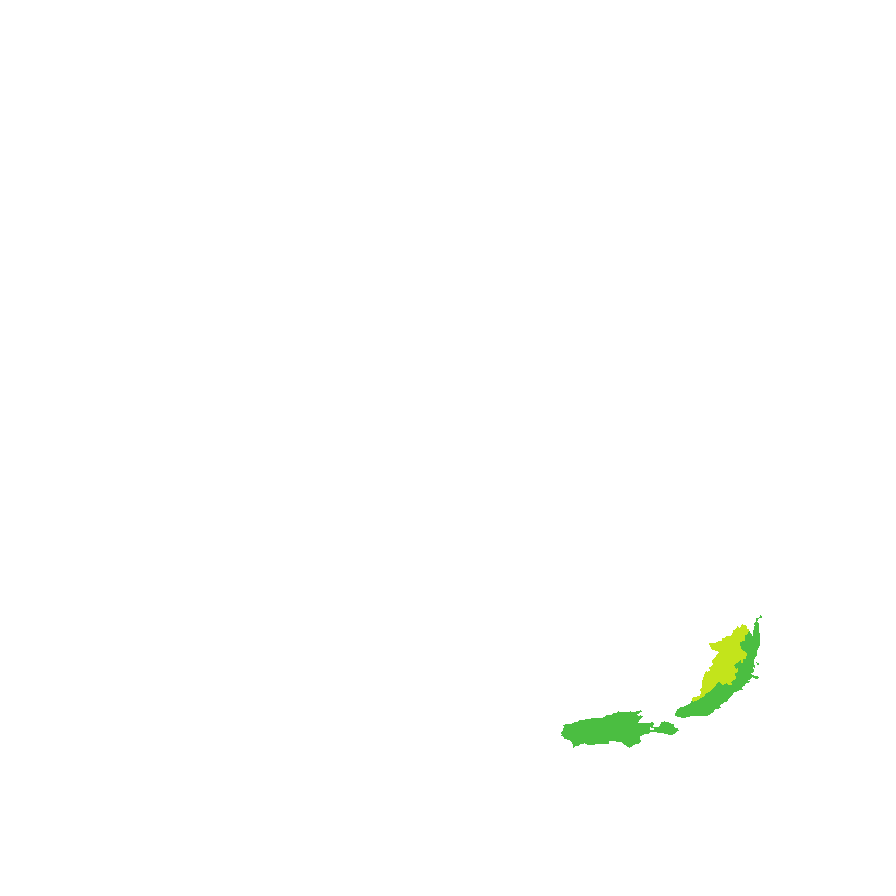
Botanical art
Prior names
Casuarina striata
Common names
Tall Oak-bush
Stalked Oak-bush
Etymology
Allocasuarina from the Greek 'allos' meaning other or different, indicating the relationship with the genus Casuarina (first used by Rumphius (1743) in allusion to the supposed resemblance of the "foliage" of Casuarina equisetifolia to the plumage of the Cassowary, which is from the Malay 'kesuari', later being latinised as Casuarius). Striata from Latin meaning striped, referring to the striated articles (stem segment).
Distribution and status
Endemic to South Australia and found only on Kangaroo Island and the southern Mount Lofty Ranges, growing in heath on lateritic or sandy soils. Native. Common in South Australia.
Herbarium regions: Southern Lofty, Kangaroo Island, Green Adelaide
NRM regions: Adelaide and Mount Lofty Ranges, Kangaroo Island
AVH map: SA distribution map (external link)
Plant description
Dioecious or monoecious shrub or small tree to 4 m high. Articles (stem segment) terete, smooth, striate to 2 cm long with 7 erect teeth (reduced leaves) around the end. Male spikes to 3 cm long, slender, with 5-7 whorls per cm. Female flower yellow-brown to 1.3 mm long. Flowering Fruits are small, woody cylindrical cone with numerous valves. Seeds are smooth semi-flat black seeds to 4 mm long with a papery wing at one end. Seed embryo type is investing. Seed embryo type is investing.
Seed collection and propagation
Collect seeds between January and December. Cones can be collected anytime as mature cones remain on the female plant. Collect cones that have closed valves from the lower part of the stem as these are more mature. Place cones in a paper bag and leave to dry for 2-3 weeks. This will allow the valves to dry and open, releasing the seeds. Then place the cones in a bucket and shake gently to dislodge the seeds. Use a sieve to separate seeds from unwanted material. Store the seeds with a desiccant such as dried silica beads or dry rice, in an air tight container in a cool and dry place. Seed viability can be below average. Seeds are non-dormant, viable seed should germinate readily.
| Location | No. of seeds (weight grams) | Number of plants | Date collected | Collection number Collection location | Date stored | % Viability | Storage temperature |
|---|---|---|---|---|---|---|---|
| BGA MSB | 9,700 (18.48 g) 9,700 (18.48 g) | 18 | 25-Oct-2005 | DJD154 Southern Lofty | 28-Jul-2006 | 30% | -18°C |
Number of plants: This is the number of plants from which the seeds were collected.
Collection location: The Herbarium of South Australia's region name.
% Viability: Percentage of filled healthy seeds determined by a cut test or x-ray.